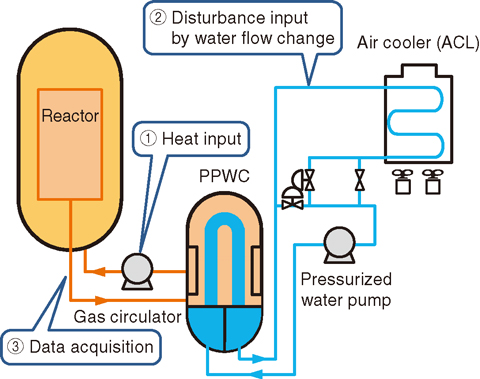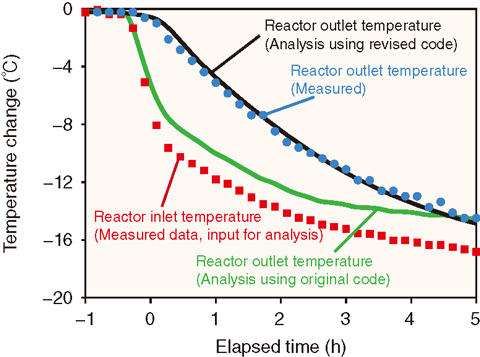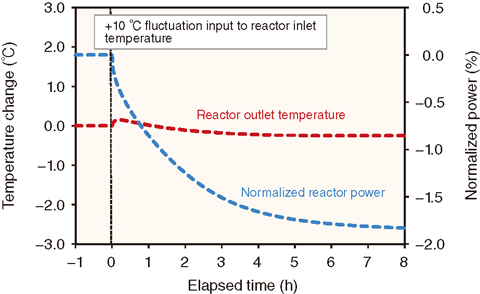
Fig.6-10 Fluctuation test of the reactor inlet temperature by the heat input of the gas circulators

Fig.6-11 Measured and numerical results for the fluctuation of core inlet temperature

Fig.6-12 Numerical results of the fluctuation of the core inlet temperature under full power
We have conducted research and development toward industrial use of the high-temperature gas-cooled reactor (HTGR). Toward the realization of nuclear heat application systems, it is important to ensure reactor safety as well as to not treat nuclear heat application systems as an extension of a nuclear plant from an economic point of view. One of the key requirements is to maintain a normal operation condition for the reactor during every possible operation condition in nuclear heat applications.
A safety analysis code has been evaluated by test results acquired using the high-temperature test engineering reactor (HTTR). However, a pre-investigation found that both the heat capacity of graphite and the heat transfer-promotion by metallic components such as side-shielding blocks had inhibitory effects upon the fluctuation of the reactor outlet-temperature. Therefore, a fluctuation test by non-nuclear heating was conducted. An outline of the thermal load fluctuation tests is shown in Fig.6-10. In this test, it was found that the heat capacities of the graphite components and the fin effect by the metallic components of the side shielding blocks inhibited the fluctuation of the reactor outlet temperature. The results are shown in Fig.6-11. The validated code was applied to the evaluation of a postulated abnormal event in the nuclear heat applications to be connected to the HTTR.
In addition, with the validated code, the transient behavior of the main parameters was investigated under full power conditions. The evaluation quantities such as reactor power and reactor outlet temperature did not exceed the evaluation criteria (+7 ℃), as shown in Fig.6-12. As a conclusion, it was validated that the nuclear heat application system is feasible to be constructed under non-nuclear regulations by showing that stable reactor operation can be continued even though temperature transients are induced by abnormal conditions in nuclear heat applications.
In addition, HTTR is under review for a new research reactor’s safety regulatory requirements. The test also confirmed the integrity of the reactor system and was useful for operator training.
<Previous: 6-4 | Next: 7 Research and Development of Fast Reactors >